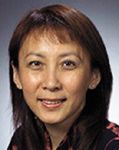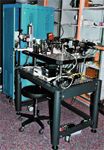Article
Dual-mirror adaptive optics technology is user-friendly
Author(s):
Livermore, CA-Engineers at Lawrence Livermore National Laboratory here have designed a dual deformable-mirror (DM) adaptive optics scanning laser ophthalmoscope (AOSLO) that can compensate for both higher- and lower-order aberrations and is user-friendly for both physicians and patients.

This AOSLO produces in vivo retinal images with nearly diffraction-limited resolution, said Diana C. Chen, PhD, optical scientist, Micro- and Nanotechnology Section, Photonics Group, Electronics Technologies Division of the laboratory.
"Some patients have high-order, large-magnitude aberrations. The single DM of existing technologies can only compensate for either higher-order, small-magnitude or low-order, large-magnitude aberrations," Dr. Chen said. "Our dual DM system uses one DM to correct low-order, large-magnitude aberrations and the second to correct high-order, small-magnitude aberrations."

"The capability of large phase compensation of the dual DM AOSLO greatly increases the spectacle correction range of existing adaptive optics [AO] systems by a factor of 10, from ±0.25 D to ±3 D, which makes the dual deformable AOSLO system much easier to use and increases the imaging efficiency during the imaging sessions," Dr. Chen said.
"An autorefractor can quickly fit a patient's prescription to within a diopter, but not necessarily to within 0.25 D," she added. "Patients with very large refractive error still may need a coarse adjustment using a trial lens or optometer to fall within the capture range of the biomorph mirror, but the large range of phase compensation makes the coarse fitting trivial. Clinicians do not have to spend time to make sure the refractive correction is highly accurate; this would drastically speed up the whole imaging process and makes the use of the system wieldy in a clinical environment."
The micro-deformable mirror (µDM) for large-stroke, lower-order aberration correction is a biomorph mirror (AOptix Inc.) with 37 elements and 18-µm stroke in a 10-mm aperture. The other mirror is a microelectromechanical systems (MEMS) mirror (Boston Micromachines Corp.) with 144 elements and a 1.5-µm stroke in a 3-mm aperture.
The AOSLO initially was tested on patients at the University of California, Davis, Medical Center. The in vivo retinal images of these subjects showed substantial improved resolution improvement and increased brightness with the combined operation of the biomorph µDM and MEMS µDM.

Newsletter
Don’t miss out—get Ophthalmology Times updates on the latest clinical advancements and expert interviews, straight to your inbox.




